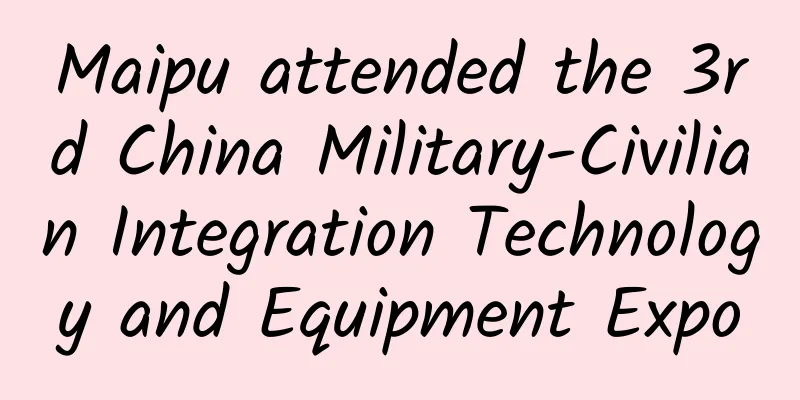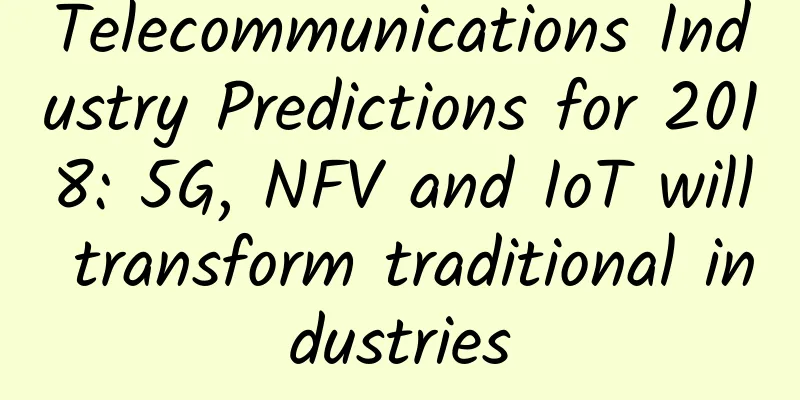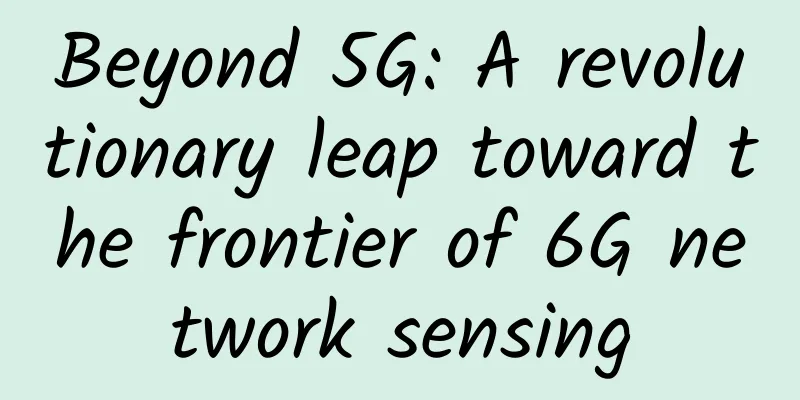LoRaWAN becomes an international standard, injecting new impetus into the development of LoRa

|
Recently, LoRaWAN was officially approved by the International Telecommunication Union (ITU) as the communication standard for low-power wide-area networks (LPWAN). The standard is called "ITU-T Y.4480 Recommendation: Low-power protocol for wide-area wireless networks" and is formulated by the International Telecommunication Union Telecommunication Standardization Sector (ITU-T).
LoRaWAN becomes an international standard, injecting new impetus into the development of LoRaIn today's mobile communications sector, global standard setting will greatly promote industrial development. The International Telecommunication Union is a specialized agency of the United Nations responsible for information and communication technology (ICT), which formulates technical standards to ensure seamless interconnection of networks and technologies. Just as the ITU previously recognized 3GPP technology as the global 5G technology standard, which greatly promoted the development of 5G networks, terminals, and chip industries, the approval of LoRaWAN as an international standard will also inject strong momentum into the global development of LoRa. The global Internet of Things is developing rapidly, driving a spurt in the number of device connections. IoT communication technologies can be divided into two categories: short-range wireless LAN and low-power wireless wide area network (LPWAN). The former includes well-known Bluetooth, Wi-Fi, ZigBee, etc., while the latter LPWAN is mainly suitable for IoT application scenarios with long distance, low bandwidth, low power consumption, and a large number of connection requirements. LoRa is a representative technology of LPWAN. LoRa is a long-distance, low-power, easy-to-deploy wireless radio frequency communication technology. In recent years, it has continued to grow rapidly around the world and has become one of the mainstream IoT communication technologies. As of December 2021, more than 2.7 million LoRa-based gateways and more than 280 million LoRa-based terminal nodes have been deployed worldwide. It is expected that by 2026, 50% of LPWAN IoT solutions will use LoRa solutions. In order to better develop LoRa technology, Semtech has previously jointly established the LoRa Alliance with many manufacturers to promote the standardization of LoRa technology and the construction of the industrial ecosystem. LoRaWAN is a communication standard developed, certified and promoted by the LoRa Alliance. It has a high degree of openness and international recognition and has developed into a global standard for secure connections for operator-level IoT LPWANs. Currently, more than 163 network operators around the world have deployed the LoRaWAN standard, providing connection services in 177 countries and regions, and the coverage is still expanding. Approval of international standards is an important milestone in the development of LoRaLoRaWAN has been widely recognized by the global IoT community since its development. The release of the ITU-T Recommendation marks that LoRaWAN has taken a step forward from being a de facto standard for the global IoT to becoming a wireless communication standard recognized by the International Telecommunication Union. The LoRaWAN L2 communication specification (version 1.0.4) has now been transformed into an ITU specification, supporting chip-to-cloud communication, and has become the first LPWAN standard certified as an ITU-T Recommendation (standard). As an important milestone in the development of LoRa, the approval not only affirms the development achievements of LoRa technology and ecology, but also proves the application prospects of LoRa in the Internet of Things market. In addition, the release of the "ITU-T Recommendation" is inseparable from the close cooperation between the LoRa Alliance and the International Telecommunication Union, which also means that after 3GPP, GSMA, Cenelec, Bluetooth, Zigbee Alliance, etc., the LoRa Alliance has officially become an organization approved by the International Telecommunication Union. Just as the International Telecommunication Union previously recognized the 3GPP standard as the 5G standard, which greatly promoted the development of related industries and ecosystems, the approval of LoRaWAN will undoubtedly promote new growth in the LoRa ecosystem and its commercial use around the world. LoRa is accelerating its implementation in China, and new use cases are emergingIntelligent networking is accelerating the digital transformation of the industrial, commercial and automotive sectors, and the COVID-19 pandemic has accelerated this transformation. Thanks to the strong demand for IoT technology in industry and commerce, more and more vertical industries are accelerating the introduction of IoT communication technologies such as LoRa. In China, LoRa has not only achieved sustained growth in the traditional water meter market, but also achieved exponential growth in some emerging IoT vertical markets and industrial applications. The following is an introduction to some emerging applications: The COVID-19 pandemic is still spreading around the world. In the past two years, LoRa technology has been widely used in epidemic prevention and control and smart medical care. LoRa ecosystem partners have developed solutions such as intelligent body temperature monitoring and home isolation epidemic prevention monitoring to efficiently and in real time monitor epidemic prevention trends and optimize community health services. At the same time, smart medical equipment and instrument management solutions based on LoRa technology also optimize medical resource allocation and improve efficiency through sensing and control technologies, thereby providing safety protection for medical staff. In response to climate change, sustainable development has also received much attention in recent years. In the agricultural field, LoRa has been widely used in smart agricultural scenarios due to its low power consumption, wide coverage, and easy deployment. It is used for smart irrigation, animal husbandry, and aquaculture, etc. While increasing agricultural and fishery output, it also saves a lot of labor and reduces adverse effects on the environment. In the power sector, LoRa not only assists the digital transformation of traditional power plants, but also supports wind turbine control and data collection in wind power and photovoltaic power stations to improve system efficiency. It is also used in applications such as smart power distribution, energy monitoring systems, and car charging piles. In addition, LoRa has been increasingly used in smart parks, smart buildings, and smart campuses in recent years, supporting the positioning and tracking of personnel and assets, as well as the realization of smart fire protection, smart lighting, smart door and window security and personnel entry management, smart parking, etc. At the same time, as LoRa technology is developed in the indoor consumer field, its application has also extended to consumer fields such as smart homes. LoRa development has entered a new stage, and future growth is expectedThe openness and standardization of communication standards are crucial to achieving large-scale interoperability. Just like the development of Wi-Fi, the approval of international standards will accelerate the development of LoRa technology and chips, as well as innovative IoT applications at home and abroad. The demand for LoRaWAN hardware in foreign markets is also expected to increase, thus bringing opportunities for Chinese companies to expand overseas markets. The International Telecommunication Union (ITU) has 193 member states and 900 members worldwide, including companies, universities, international and regional organizations. The approval of LoRaWAN as an ITU standard will further promote ITU members to understand LoRa technology and LoRaWAN standards, as well as their potential for application in smart cities and digital transformation. At present, the intellectual property rights policy (IPR) of the LoRa Alliance is consistent with that of the ITU. After applying, ITU members can use LoRaWAN for free and open source, just like members of the LoRa Alliance. It is foreseeable that the development momentum of LoRa will be even stronger in the future. Semtech will continue to promote the innovation of LoRa technology and chips, strengthen R&D, technical services and supply chain support, help customers seize market opportunities, work with ecological partners to better support the development of IoT applications, and jointly build a smarter, interconnected and sustainable world. |
<<: HTTPS - An easy-to-understand explanation of the HTTPS protocol to solve interview problems
>>: 5G will become a new engine of economic growth
Recommend
Riverbed Redefines APM, Helps Enterprises Promote Digital Transformation
[51CTO.com original article] It is obvious that d...
With the three major operators working together to promote 5G messaging, how far is it from success?
On April 8, China Mobile, China Telecom, and Chin...
How to Optimize Your Wi-Fi Network for a Smart Home System
Evaluate your current Wi-Fi network Before gettin...
In addition to 404, what other "codes" are there for web pages?
404 Not Found When surfing the Internet, whether ...
Lenovo Debuts at Microsoft IoT Conference, Driving Business Intelligence Innovation with Smart IoT Devices
On December 3, the highly anticipated 2019 Micros...
Mini Program Dependency Analysis Practice
[[350074]] Students who have used webpack must kn...
Smartphones supporting Wi-Fi 6/6E will dominate the market by 2025
Wi-Fi 6E will be commercially available in 2021. ...
[11.11] RackNerd: $11.11/year - 1.11GB/11GB/3TB/San Jose and other data centers
RackNerd has also released several Double 11 prom...
How to Choose Inventory Tracking Technology?
What is inventory tracking technology? Inventory ...
2022, 6G development continues to heat up
Development of 6G networks is gathering pace, wit...
How did the three major operators become involuted? Is it necessary for the three to merge to avoid involuntariness?
It is child's play for operator staff to ente...
The United States has another big move for 5G: agreeing to merge two major operators
The Trump administration has tried every possible...
What is the use of airplane mode? What will happen if you don't turn it on when flying?
Everyone knows that when flying, you should turn ...
How to Intelligently Manage the Last Mile of SD-WAN
Note: This article describes how to intelligently...
Enterprise network cabling will be affected by five major technology trends
It is estimated that by 2022, the number of fixed...









